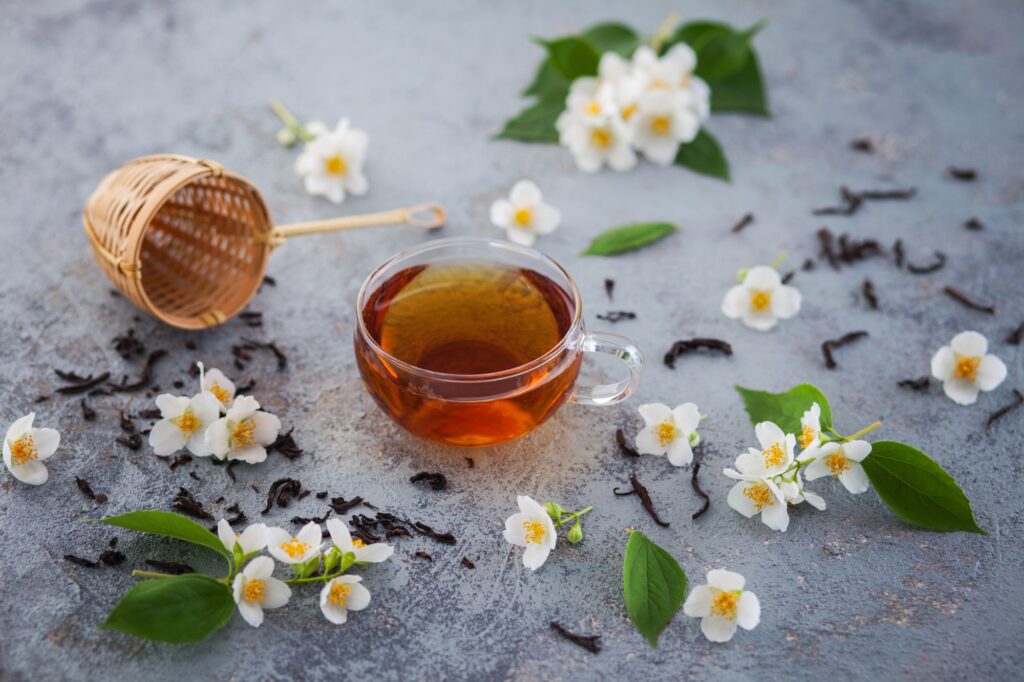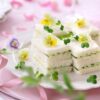
Imagine walking through a lush tea garden at dusk, the air heavy with the intoxicating scent of jasmine blossoms. This is where the magic of jasmine tea begins – a delicate fusion of green tea’s earthy notes and jasmine’s floral embrace. But how does this aromatic wonder differ from its cousin, regular green tea? Let’s embark on a sensory journey through the production process of jasmine tea.
From Bud to Leaf: The Harvest
While both jasmine and regular green teas start their lives as Camellia sinensis leaves, their paths diverge from the very moment of plucking.
Regular Green Tea: Harvesters carefully select the youngest buds and leaves, typically the top two leaves and a bud. This ensures a delicate flavor and high concentration of beneficial compounds.
Jasmine Tea: The base green tea for jasmine tea often uses slightly more mature leaves. Why? These leaves provide a sturdier canvas for the jasmine scenting process, allowing the tea to hold its own against the powerful floral notes.
The Oxidation Waltz
Oxidation is a crucial step in tea processing, and it’s here that green teas, including jasmine tea, distinguish themselves from their more oxidized cousins like oolong and black tea.
Both Teas: Green tea leaves, whether destined for regular green tea or jasmine tea, undergo minimal oxidation. After plucking, the leaves are quickly heated to halt the oxidation process. This preserves their fresh, vegetal flavors and vibrant green color.
The key difference? Jasmine tea leaves might undergo a slightly longer withering period before heat-fixing, allowing for a subtly different flavor profile that complements the jasmine scenting to come.
The Scenting Serenade: Jasmine’s Signature Dance
Here’s where jasmine tea truly comes into its own, performing a fragrant ballet that regular green tea never experiences.
- Jasmine Harvest: As the sun sets, jasmine flowers are hand-picked at their peak of fragrance.
- The Layering: Freshly processed green tea leaves are layered with jasmine blossoms in a carefully controlled environment.
- Nocturnal Magic: Throughout the night, as the jasmine flowers open, they release their essential oils. The tea leaves, still warm and porous from processing, eagerly absorb these aromatic compounds.
- Repetition: This process is repeated multiple times – sometimes up to seven cycles for the highest quality jasmine teas – to achieve the desired level of fragrance.
- Finishing Touches: Finally, the spent jasmine blossoms are removed, leaving behind green tea leaves infused with their ethereal scent.
This labor-intensive process is a testament to the artistry behind jasmine tea production. It’s a far cry from the straightforward processing of regular green tea, which goes from leaf to cup without this aromatic interlude.
A Symphony of Flavors
The production differences between jasmine and regular green tea culminate in distinct flavor profiles that dance on the palate:
Regular Green Tea:
- Vegetal and fresh
- Notes of grass, seaweed, or steamed vegetables
- Can range from sweet to slightly bitter
- Clean, crisp finish
Jasmine Tea:
- Floral aroma that entices before the first sip
- Underlying green tea notes provide a solid base
- Sweet, perfumed taste that lingers
- Smooth, velvety mouthfeel
Savoring the Difference
As we’ve seen, while jasmine tea begins its life as green tea, its journey to your cup is a testament to the tea master’s art. The next time you brew a pot of jasmine tea, take a moment to appreciate the intricate dance of tea leaves and jasmine blossoms that created this aromatic wonder.
Whether you prefer the straightforward purity of regular green tea or the fragrant allure of jasmine tea, both offer a window into the rich world of tea craftsmanship. Why not conduct your own tasting comparison? Brew a cup of each and let your senses guide you through the nuances we’ve explored.






